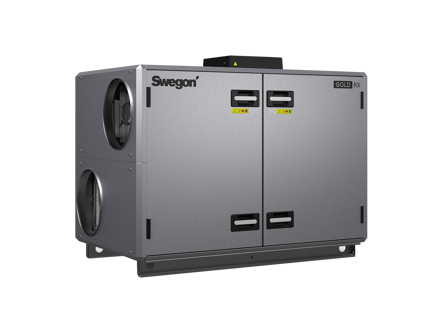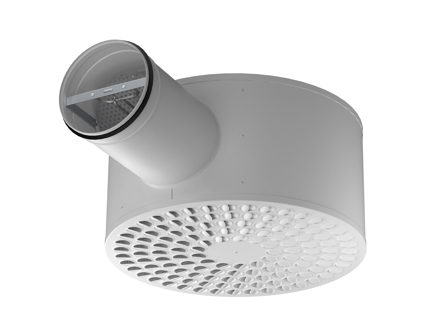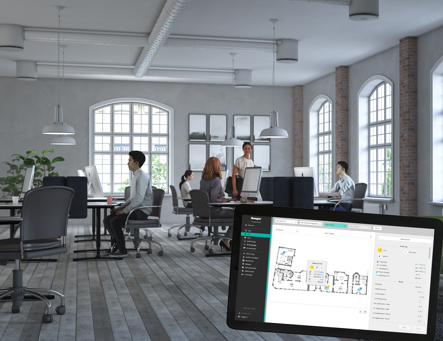
The wooden structure improve the indoor climate
The Nodi building
Nodi is located in the centre of one of Gothenburg’s newest suburban areas, Hovås, it is a landmark as well as a benchmark for the continuous development of this new borough thanks to its commitment to sustainability and well-being.
The building seems to grow upwards and outwards as it expands with each storey all the way to the fifth floor’s rooftop terrace. The somewhat organic design of the structure is suitable considering the building’s exposed wooden frame and low carbon footprint.
Offices are laid out to suit a variety of businesses from the entrance at the second level to the top floor. The bottom level holds, in part, a luxury clothing and accessories store, and in part, storage. The latter is located underground under the entrance to the office space.
A good indoor climate thanks to natural materials
The structure of the Nodi building is made completely out of wood. Wood as a natural construction material makes a significant difference to the climate, both outside and inside. In terms of the latter, wood is sound absorbing and hence, allow for a softer tone indoors. It is also beautiful to look at and it can eliminate, what other matierals cause or intensify, unpleasant reflections and glare.
Wood is an organic material that answers to its environment and increases the quality of the indoor climate by, for example, evening out fluctuations in humidity and temperature. Many working or living in wooden buildings experience warmth and comfort, and get a feeling of closeness to nature.
Learn more in our guide about the factors that impact the indoor climate
A healthy and comfortable indoor environment
In the case of Nodi, it was key for the heating, ventilation andn cooling (HVAC) solution to follow the vision of low carbon footprint and optimal indoor conditions for a healthy and comfortable indoor environment.
Natural materials such as wood emit lower levels of volatile organic compounds (VOCs) than for instance aluminium, steel, concrete, plastics and other building materials. VOCs are important to delimit when creating indoor environments, because studies show that if VOCs levels are kept low, there will be an improvement in the people in the building's ability to think strategically and process collected information.
The challenge of an indoor climate solution is to respond to the changes that happen naturally in the indoor environment, like the variations a wooden structure constitute, and to ensure that unnatural impacts are ventilated out of the building. The latter can be heat from activities inside the building or pollutants from office equipment, paint and furniture.
Read our expert's blog about VOC and CO2
Read more in our indoor climate guideA demand controlled indoor climate is the solution
In the case of Nodi we got the opportunity to contribute with our knowledge and expertise early in the process. We designed a complete solution comprising our GOLD air handling units with heat recovery, this to continue on the subject of energy-efficiency and sustainability. We also provided Swegon COLIBRI Free ceiling diffusers in a customised colour. Its rotatable nozzles future proof the building and make the solution long-lasting.
To crown it off, our far developed Swegon WISE system for a demand controlled indoor climate was chosen for the entire building. WISE allows the different offices as well as the store to be ventilated, heated and cooled just as much as needed. Not too much, which would be energy-inefficient, nor too little which would hurt productivity and affect comfort for the ones working or experiencing the building, but just perfect to acknowledge the project concept of sustainability and well-being.
More about energy recovery and demand controlled ventilation in our guide section


